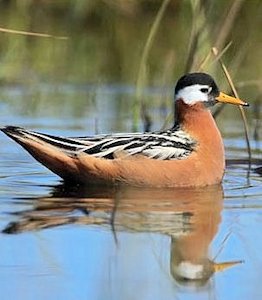
|
Birds Feeding on Invertebrates Some birds' adaptations allow them to feed on invertebrates such as snails, clams, shrimp, and other inhabitants of estuaries and mud flats, Shorebirds, seabirds, ducks, and even some land birds concentrate on prey such as these. Black Oystercatchers jab with their sharp bills into muscles that live along the rocky coast. With a single probe they can sever the muscle that closes the muscle's shell. Avocets sweep the water with their delicate, upturned bills. The bill's unusual twist allows the bird to skim a horizontal layer of water or the top surface of mud, where the food it seeks in most abundant. Gulls sometimes pick up clams, fly over a hard surface such as a nearby parking lot or a house roof, and drop them to smash the clamshells, revealing the good food inside. This technique is sometimes misdirected; gulls have occasionally stolen large numbers of golf balls from coastal driving ranges, or dropped stones through glass skylights in a coastal city. Phalaropes feed on much smaller prey --- tiny insects and other invertebrates in the ocean or in shallow pools. By spinning around rapidly in the water, a Red Phalarope brings its prey to the water's surface. The spinning creates small currents that move the prey up to where the bird can reach it by jabbing its bill in the water. |
| Red Phalarope |